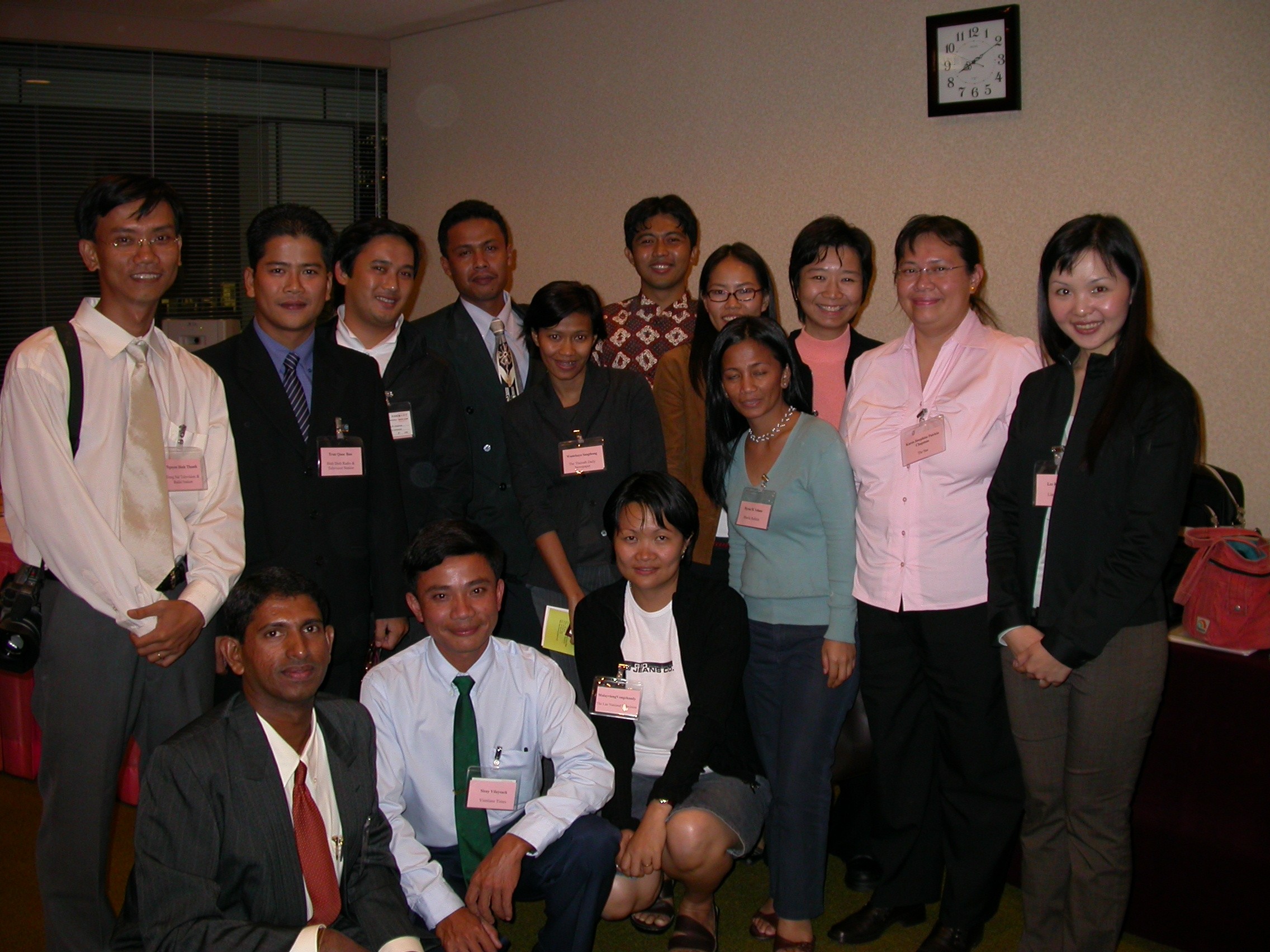|
The registration form
NSK News Bulletin Online
June 2004 -------------------------------------------------------------------
*Topics --27th NSK-CAJ Fellowship Program Under Way - - - - - - - - - - - - - - - - - - - - - - - - - - - - - - - - - - - - - - Story of the Month>>> Media Exercises Restraint on Freed Japanese Civilians from Iraq ------------------------------------------------------------------- NSK, NAB agree to Moderation in Coverage of Repatriated Abductees' Children Prime Minister Junichiro Koizumi traveled to Pyongyang on May 22 for summit talks with North Korean leader Kim Jong Il on the abductions issue and other matters. He returned to Tokyo later the same day, bringing with him the five children of two repatriated Japanese abductee couples. Prior to the arrival of the children in Japan, the Japan Newspaper Publishers and Editors Association (NSK) and the National Association of Commercial Broadcasters in Japan (NAB) agreed to "moderation in news-gathering and news-reporting" about the arrival and the settling in of the children in Japan. That agreement was reached in response to a request from the five Japanese abductees repatriated in 2002. On May 20, the general secretary of the group representing abduction victims' families (the Association of Families of Victims Kidnapped by North Korea) visited NSK on behalf of the five repatriated abductees to seek "media restraint" from the NAB and NSK subcommittee on overly aggressive pack reporting or "media scrums." That terminology describes excessively intrusive swarming of reporters around persons involved in various incidents. Such intrusive behavior has drawn considerable public criticism for impeding upon normal social life and infringing upon the privacy of those persons at the center of media interest. The repatriated abductees called for much more media restraint in covering the children's arrival than there was when five abductees themselves returned from North Korea in 2002. The families also called on the media (1) to forego individual contact with the children until they can fully understand Japan and get accustomed to living here; (2) to accept that the families will not attend any news conferences until the children fully recognize their status and situation; and (3) to keep reporters and photographers away from their homes. NSK and NAB responded by reaching an agreement on media coverage that they jointly issued in the names of the NSK subcommittee on the "media scrum" problem, the NAB study group on problems related to news-reporting, and the association of Tokyo-based city news editors. The text of the agreement calls the children's arrival a matter of major national concern that the media must report. But it pledges that media organizations will respect the families' human rights and privacy and will not disturb peaceful life in their neighborhoods. The text of the agreement was forwarded to the local media liaison council representatives in Niigata and Fukui prefectures, where the repatriated abductees reside, as well as to the press clubs in the municipal offices of Kashiwazaki City and Sado City in Niigata Prefecture and Obama City in Fukui Prefecture. NSK and NAB also called on the Japan Magazine Publishers Association and non-member newspapers and broadcasters to respect the same restrictions. On May 19, the victims' group made a similar request to local media via local government abductee-support offices. On the same day, a general meeting of the press club at the Kashiwazaki Municipal Office agreed to "restraint" in line with the request, but asked that a news conference be held after the families return to their homes. The next day, the press club at the Obama Municipal Office agreed to the Chimura family's request, but asked the local support office to organize a news conference with the couple and their children after the children arrived from North Korea.
A total of 119 reporters and technical staff from newspapers, news agencies, broadcasters and magazines traveled to Pyongyang to cover Prime Minister Junichiro Koizumi's summit talks with North Korean leader Kim Jong Il on May 22. That is just one fewer than the number that covered his first official visit to Pyongyang in September 2002. According to the press office at the Prime Minster's Official Residence, the total included 49 newspaper and news agency reporters, 57 from broadcasters, three magazine reporters and three others. Participating Japan-based foreign media included the Associated Press, the Wall Street Journal, Bloomberg, Reuters, AFP, Chosun Ilbo (a major South Korean daily), and Kyung Hyang Worldnet (a South Korean online newspaper). Traveling ahead, 94 media people flew to Pyongyang on a chartered jet on May 21 and opened a press center at the Hotel Pyongyang Koryo, as was the case in Koizumi's previous visit. The remaining 25 reporters traveled with the prime minister on his government jet. The Diet on May 21 passed a judicial reform bill to introduce a so-called lay judge system. Diet deliberations led to some changes in the original bill. The House of Representatives passed amendments including a reduction in the punishments for citizens who violate their vows of confidentiality. Despite NSK criticism, the enacted law does not clarify or modify clauses that might prompt further restrictions on newsgathering and news reporting. At issue are clauses pertaining to the scope and duration of confidentiality obligations of lay judges and restrictions on media contact with former lay judges. The new system is to be implemented within five years, with the launch of a quasi-jury system due by the end of fiscal 2009. The new system is the result of the final recommendations of the Office for Promotion of Justice System Reform set up within the Cabinet in December 2001 under the Judicial System Reform Promotion Law. The government submitted the bill on March 2. The main points of the law, with respect to media activities, are as follows: (Ban on publishing personal information identifying lay judges) (Ban on contact with lay judges)
|
|||||||||||||||||
